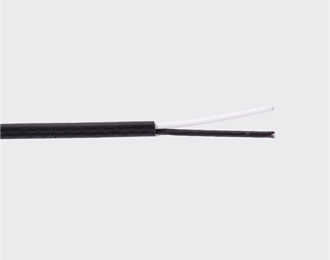Thermocouple Cables
Key Characteristics
Dissimilar conductors within a single cable
Insulation types include; PFA, FEP, PTFE or Polyimide
Choice of conductor combinations according to temperature range and application
Conductor alloys include; Copper, Constantan, Nickel Chromium, Nickel Aluminium, Iron, Nicrosil, Nisil & Cupronic
Available as twisted pair, multi-core , flat twin or single shot constructions
Colour coded insulation for ease of identification
Excellent resistance to chemicals, oils and lubricants
Wide temperature performance
Can be manufactured to meet requirements of BS 60584-2, BS 4937-30, American ANSI MC96.1 & ASTM E230, German DIN, French NFC, Japan JIS, British BS1843 and IEC 60584-1
Typical Applications
Connecting Thermcouple sensors to devices
Instrumentation & control
Temperature measurement
Chemical measurement
Product Data
A range of different thermocouple cable types to suit different applications designed and manufactured to meet the requirements of BS EN 60584-2, BS 4937-30.
WHAT ARE THERMOCOUPLE CABLES?
Thermocouple cables and extension wires allow the accurate and electronic measurement of temperature and have numerous industrial applications in specialist and extreme environments.
They generally comprise two strands of conductor made of different metals, one being the positive conductor and the other the negative conductor. The two dissimilar metals in the thermocouple cable are electrically joined at the sensing point. When heated the metals produces a thermoelectric charge (Electro Motive Force, or EMF), which changes as the temperature increases or decreases. The EMF (measured in millivolts) that arises is proportional to the temperature difference between the two conductors at the sensing point.
Different temperature applications require different metal conductors, different jacketing/sheathing materials and different calibration. Thermocouple cables are therefore available in a broad range of combinations of conductor, jacketing and calibration. Each pair calibrated to suit a different temperature range and environment. The most common types are manufactured to IEC Specifications J, K, T, N and IEC colour Codes. They are also available in many other local colour codes.
The diameter of conductor used also plays an important part. Generally larger diameter conductors can withstand higher temperatures and are more durable, but have a slower response time than smaller diameter conductors.
Typically, both conductors are insulated then laid or twisted together and finally over-sheathed or over-braided.
Criteria for consideration when selecting a thermocouple cable:
Temperature range required
Chemical resistance of the sheath material
The environment or atmosphere the cable will be exposed to – metals react differently in different environments even at similar temperatures
Space available and method of installation
TO FIND OUT MORE
Call our UK Sales team on 01494 441414
or please email us

